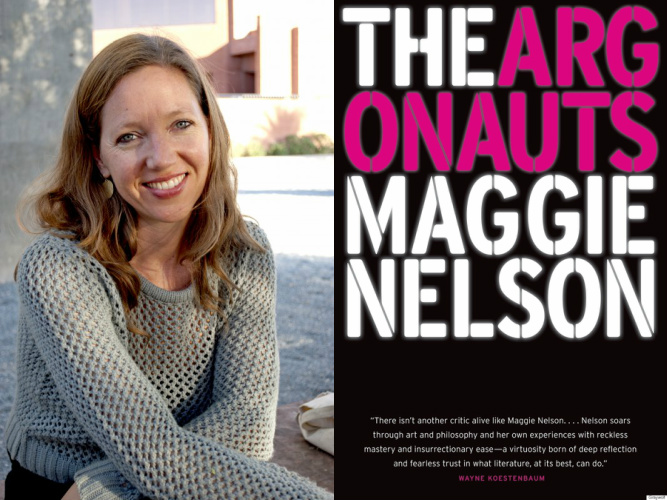The Latin prefix ‘trans’ embodies movement: to go beyond, across, through. In her latest book Argonauts, critic and poet Maggie Nelson engages with theorists Luce Irigary, Jacques Lacan and Eve Kosofsky Sedgwick, moving through, across, and somewhere beyond their philosophies as she applies them to her lived experience.
‘Argonauts’ refers to a hypothetical spaceship dubbed the Argo that continuously reconstructs form throughout its ongoing voyage. Nelson’s prose incarnates this essential sense of movement, retaining a verse-like relation to its subject matter, the author’s domestic experiences and evolving romantic relationship with gender fluid artist Harry Dodge.
Throughout the piece there is a marked emphasis on the role and limitations of language. Early in their relationship, Nelson, unsure of which pronouns her lover prefers, resorts to “an orgy of specificity,” “a person’s name over and over again.”
By resisting categorization (Is it a Memoir? Art Criticism? Poetry? Philosophy? Fiction? All of the above?) Argonauts asserts its incorporative existence as a work of art independent of genre. It encourages its readers to extend this liberty to the human beings at its heart.
Discussing her pregnancy (which occurs simultaneously with Harry’s testosterone therapy and mastectomy) Nelson writes to the latter: “on the surface, it might seem as though your body was becoming more and more “male”, mine more and more “female”. But that’s not how it felt. On the inside, we were two human animals undergoing transformations beside each other, bearing each other loose witness. In other words, we were aging,”
Argonauts insists on paradox. while scrutiniing language of thought and being, as a work of literature, it, too, is ontologically dependent on language and its structures. The beauty of Argonauts is that it does not miss this irony, so essential to its embrasure of non-binary complexities, its lyrical emphasis on movement and its implications. Argonauts both elides and confronts the dominative ontology of its emerging factors.
Meditating on the ontological similarities between gender and color, for example, Nelson writes, “It isn’t quite right to say that an object is a color, nor that the object has a color…. Nor is color voluntary, precisely. But none of these formulations mean that the object in question is colorless.”
Nelson’s achievement is manifest in such articulations, the assertions of color which make Argonauts a uniquely eloquent chronicle of life and love, an “homage to the transitive, the flight, the great soup of being in which we actually live.”
***
Rachel Bonner is an aspiring art historian/independent curator, with a BA in Art History (minor in Literature) from Ursinus College. She lives in the Greater Philadelphia Area and is passionate about conceptual and performance art and its affinities with language/poetry. In her free time, she enjoys traveling, running, and doing hatha yoga.

